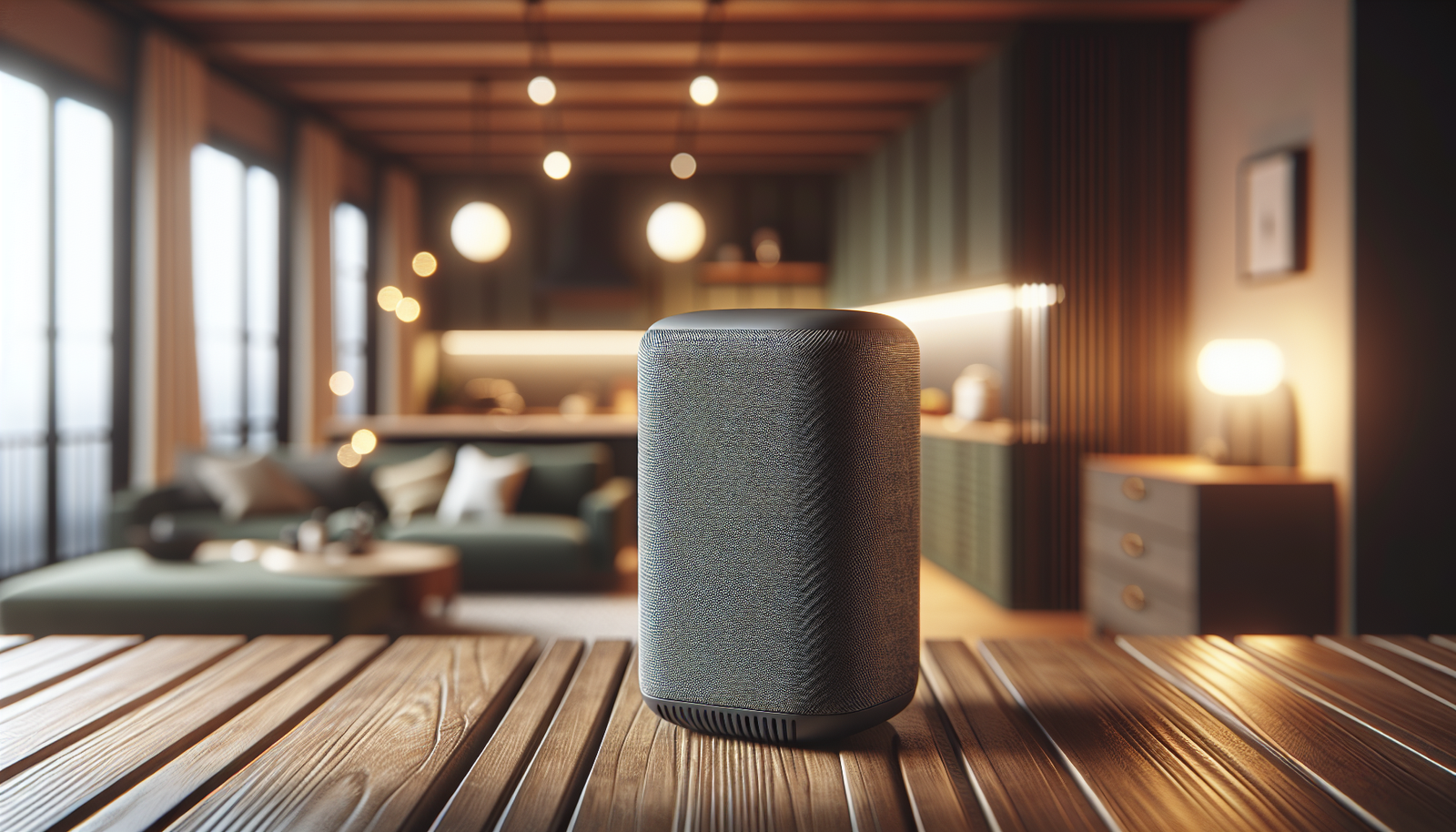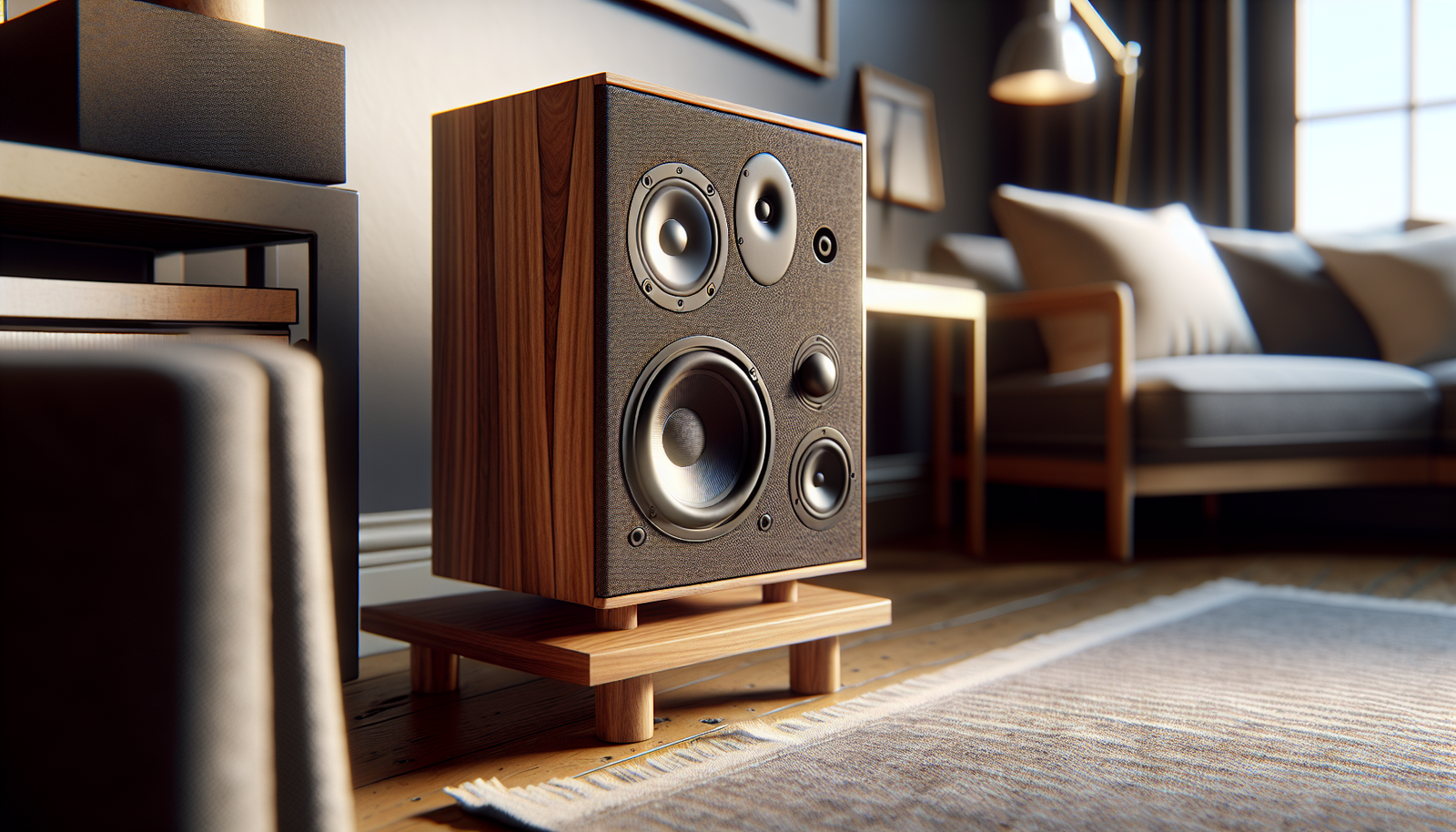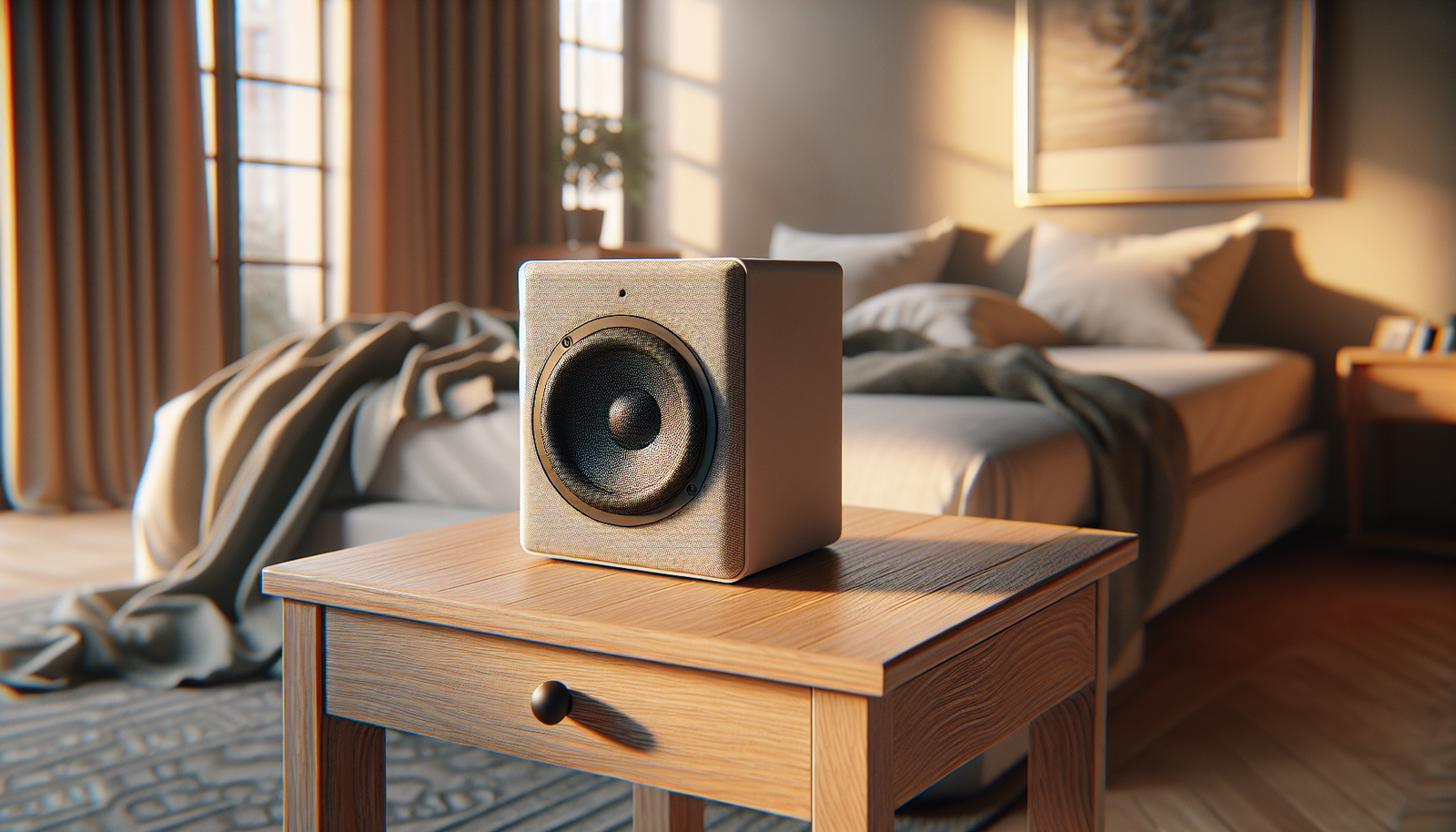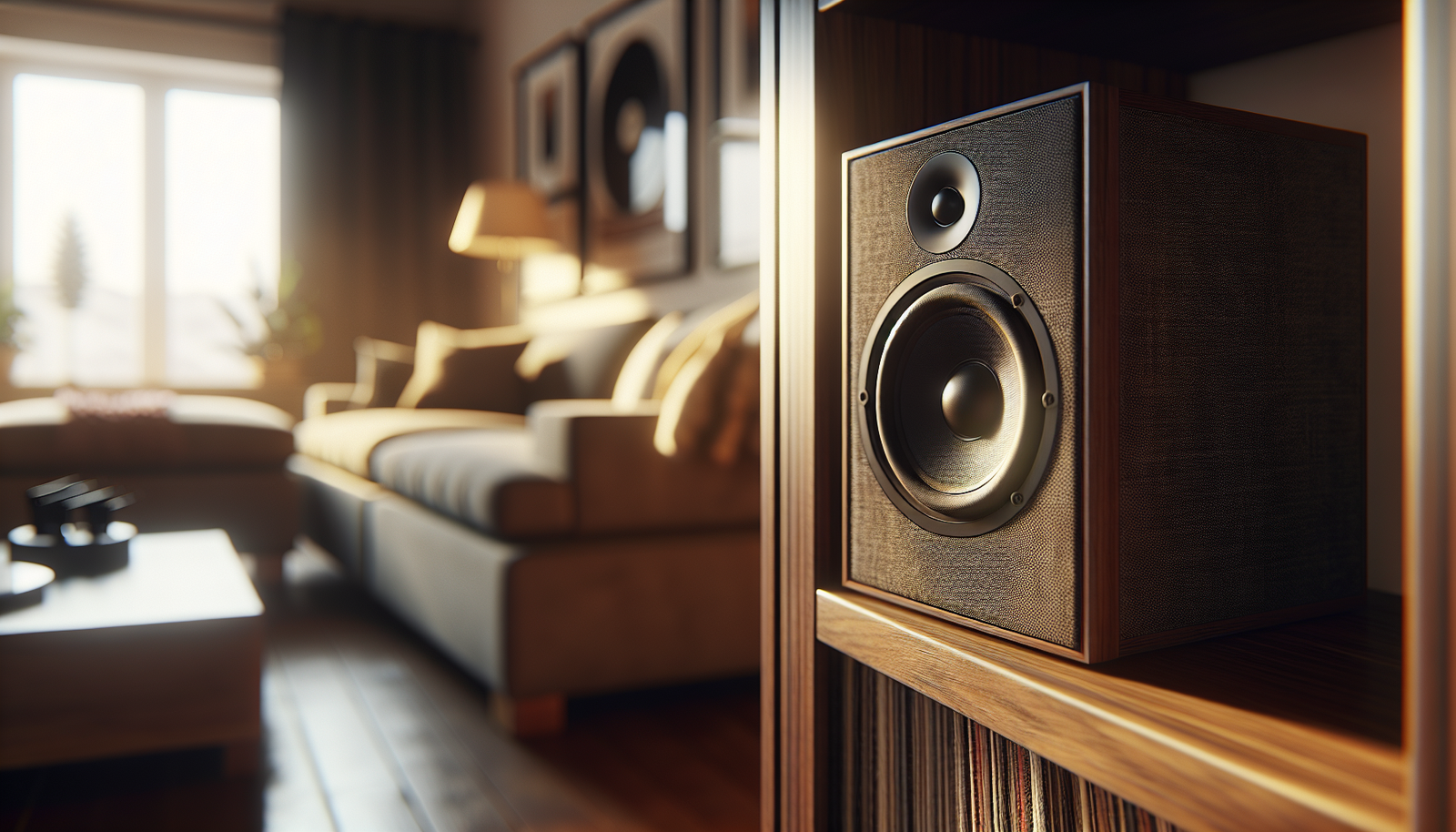Have you ever wanted the same song to follow you from the kitchen to the bedroom without having to tap anything more than once?
Choosing the best multi room speaker system for your home
This guide helps you choose the best multi room speaker system for your home. You’ll get clear explanations of how systems differ, what features matter most, and a practical path from identifying needs to buying and setting up speakers. The goal is to make your decision confident and rewarding.
What is a multi room speaker system?
A multi room speaker system lets you play audio in more than one room simultaneously or independently. You can stream the same song across the house, play different tracks in different rooms, or create whole-home zones with synchronized audio.
This section gives you the basic concept so you can understand what you’re buying and why it matters.
Why choose a multi room system?
You’ll enjoy seamless listening across rooms, easier party management, and consistent sound quality where you want it. Multi room systems also simplify central control through apps or voice assistants.
You’ll find that once your system is set up, simple tasks like starting morning music in the kitchen or sending a podcast to the bedroom become frictionless.
Types of multi room systems
Understanding the types of systems helps you match technology to your home and habits. There are two main approaches: wireless systems and wired/distributed audio systems.
Wireless systems (Wi‑Fi and proprietary protocols)
Wireless systems use your Wi‑Fi network or proprietary mesh networks to communicate with speakers. They’re usually easy to set up and flexible for adding or moving speakers.
You’ll find many modern systems use Wi‑Fi for high-resolution streaming, while some brands use their own mesh to improve reliability and synchronization.
Wired and distributed audio systems
Wired systems run audio via Ethernet, speaker wire, or centralized distribution amps. They often offer superior reliability and can be ideal for built-in or whole-house installations.
If you’re renovating or building a new home, wired options let you hide cabling and place high-performance speakers without worrying about Wi‑Fi coverage.
Hybrid systems
Some systems combine wired and wireless elements. For example, a central hub may connect via Ethernet while speakers are wireless, or in-ceiling wired speakers might integrate with wireless controllers.
A hybrid approach gives you the best of both worlds: stable core networking and the flexibility to add wireless endpoints.
Key features to evaluate
Choosing the right system means prioritizing the features that matter most for your usage. Below are the essentials to consider.
Sound quality
Sound quality includes clarity, bass response, dynamics, and room-filling capability. You’ll want speakers that match the size of your rooms and the music you listen to.
If you prefer detailed sound or like to listen loudly, look for speakers with good driver design, sufficient power, and positive reviews from listeners and reviewers.
Synchronization and latency
Synchronization (sync) is crucial for whole-house playback. Good systems keep all speakers in perfect time with sub-10ms latency, avoiding echoes or phasing.
If you plan to use speakers for TV audio in multiple rooms, choose a system that offers lip-sync and low-latency modes.
Streaming services and codecs
Make sure the system supports the streaming services you use—Spotify, Apple Music, TIDAL, Amazon Music, Qobuz, and others. Also check supported audio codecs (AAC, MP3, FLAC, ALAC, MQA).
If you like high-res audio, confirm support for lossless formats and sample rates.
Control options (apps, physical controls, voice)
You’ll want intuitive control via a mobile app, the ability to use physical buttons on the speakers, and voice assistant compatibility if that matters to you.
Some systems offer excellent apps with group presets and multi-user support, while others rely heavily on voice control.
Compatibility with ecosystems
Check if the system works with your existing smart home setup: Apple HomeKit, Google Home, Amazon Alexa, or proprietary ecosystems. Ecosystem compatibility affects convenience and future expandability.
If you’re invested in a particular platform, choose a speaker system that fits seamlessly into it.
Expandability and flexibility
Look for systems that let you easily add more speakers, create zones, and reconfigure groups. You’ll appreciate flexibility as your home and needs change.
Some brands lock you into their ecosystem, while others play nicely with third-party devices.
Build, design, and placement options
Design affects aesthetics and placement. You can choose bookshelf speakers, floor-standing models, soundbars, in-ceiling or in-wall speakers, and portable battery-powered units.
Consider your décor and where you like speakers to be installed or moved.
Power and wired connections
Consider whether speakers are mains-powered, battery-powered, or passive (requiring an amplifier). Passive speakers need an amp or receiver; powered speakers have built-in amplification.
If you like neat installations with no external amps, choose powered speakers or systems with integrated amplifiers.
Popular multi room ecosystems compared
Below is a concise comparison of major multi room systems to help you narrow choices. The table summarizes strengths and common trade-offs.
| System | Strengths | Typical Trade-offs |
|---|---|---|
| Sonos | Smooth app, wide service support, reliable synchronization, many product types | Generally pricier; partial support for hi-res formats |
| Bose (Smart Home/Smart Speakers) | Good sound quality, easy setup, strong brand | Ecosystem less open; fewer advanced audio options |
| Apple AirPlay 2 | Native on many speakers, excellent for Apple users, Siri integration | Best with Apple devices; fewer multi-user features |
| Google Cast (Chromecast) | Works well with Android and Google ecosystem, inexpensive endpoints | App experience varies by brand |
| Amazon Alexa Multi‑Room | Affordable Echo devices, voice control | Audio quality varies; Amazon-first ecosystem |
| Bluesound | High-res audio, audiophile focus, Roon/UPnP support | Higher cost; fewer entry-level portable options |
| HEOS (Denon) | Good integration with AV equipment, stable | App less polished than top competitors |
| Yamaha MusicCast | Good AV integration, variety of products | App/UX can be clunky compared to Sonos |
This table should help you match system strengths to your needs. Focus on the ecosystem that best aligns with your streaming services and devices.
Room-by-room planning
Planning each room helps you decide how many speakers and what type you’ll need. Think about room size, layout, and primary listening use.
Room size and speaker selection
Small rooms do well with compact speakers or one quality bookshelf/stand unit. Medium to large rooms benefit from multiple speakers, floor-standers, or strategically-placed in-ceiling speakers.
If you want music and TV audio in the same room, consider soundbars or a paired speaker + subwoofer setup.
Use cases by room
Different rooms have different priorities: background music in the kitchen, full-range listening in the living room, discreet design in bedrooms, or outdoor durability for patios.
Match speaker models to the room’s use and ambiance.
Acoustic characteristics and treatment
Hard surfaces create reflections and brightness, while soft furnishings absorb sound. You don’t need professional acoustics for casual listening, but simple changes like rugs, curtains, and furniture placement improve sound.
If you’re aiming for critical listening, consider basic room treatment or placement adjustments.
Placement and configuration tips
Placement determines how speakers perform. Small moves often have big effects on clarity and bass.
General placement rules
Place speakers away from corners for tighter bass, give front speakers room to breathe, and keep symmetry where possible for balanced stereo imaging.
If using multiple speakers per zone, create roughly equal distances from the listening area to avoid timing issues.
In-ceiling and in-wall options
Built-in speakers are great for minimal aesthetics and background music. Choose models with proper power handling and cutout sizes, and plan for tweeter orientation if you need directionality.
Installation is best planned before painting or ceilings are finished, but retrofit options exist.
Outdoor and damp locations
Select weather-resistant or explicitly outdoor-rated speakers for patios and pool areas. Consider wired runs and transformer-based landscape audio for distributed garden systems.
Keep volume limits and neighbor considerations in mind.
Networking and technical requirements
A stable network is essential for wireless multi room systems. You’ll need to plan for bandwidth, coverage, and device limits.
Wi‑Fi bandwidth and router selection
Streaming several high-quality streams can tax your network. A dual-band (2.4 GHz + 5 GHz) or tri-band router with decent throughput helps, especially with many devices.
Place the router centrally or use wired access points for better coverage.
Mesh networking vs extenders
Mesh systems usually offer better seamless roaming and consistent speeds than basic extenders. If your home has weak Wi‑Fi spots, mesh is a strong choice.
Some speaker brands also include proprietary mesh technologies to improve speaker-to-speaker communication.
Wired backhaul and Ethernet
If possible, run Ethernet to at least one or two zones or to a hub. Wired connections reduce dropouts and improve sync.
Powerline adapters are an option where Ethernet isn’t practical, but performance varies by home wiring.
Network security and guest access
Secure your Wi‑Fi with strong passwords and keep firmware updated. Set up a guest network to isolate visitors and avoid cross-device issues.
Some systems require device discovery; strict network isolation may need configuration changes to allow speaker control.
Installation and setup process
Installing a multi room system ranges from plug-and-play to professional installation. Your comfort level with technology will guide your approach.
DIY setup steps
- Unbox and power speakers.
- Install the vendor’s app and create an account.
- Connect each speaker to Wi‑Fi or wired network following app prompts.
- Group speakers into rooms or zones and assign names.
- Link streaming services and set default devices.
- Test synchronization and adjust EQ or room settings.
The app usually guides you, but give each speaker a clear name for easy grouping.
When to hire a professional
Hire pros for in-wall/in-ceiling installations, complex wired whole-house audio, or if you want in-wall amps and concealment. A pro ensures correct cabling, placement, and balanced audio.
Professionals can also calibrate speakers for rooms using measurement tools.
Budgeting and cost considerations
Budgeting helps you prioritize features and avoid overspending. Costs include speakers, network upgrades, amplification, and installation.
Typical cost ranges
- Entry-level multi room (single-brand smart speakers): $100–$400 per speaker.
- Mid-range (quality bookshelf/powered speakers): $300–$800 per room.
- High-end (audiophile multi room, whole-house wired): $1,000+ per room plus installation.
Allocate budget for a stronger router or mesh system if your Wi‑Fi needs upgrading.
Cost-saving tips
Buy a starter bundle or single-source brand to keep compatibility. Start with main living areas and expand over time. Look for sales around holidays and consider certified refurbished units.
If you already have a stereo receiver, you can add HEOS or MusicCast devices to bring multi room without replacing everything.
Integration with TV and home theater
You can link multi room audio to your TV for consistent sound around the house. Choose systems that offer line-in, HDMI ARC/eARC, or specific TV synchronization features.
Soundbars and multi room
Many soundbars from major brands support grouping with other speakers. If you want synchronized TV sound in other rooms, verify the system handles lip-sync and low-latency modes.
Be careful: some systems prioritize music only and add slight audio delay to TV sources.
AV receivers and distributed audio
AVRs often include multi room features (Zone 2/Zone 3) or support for proprietary multi-room ecosystems. This is ideal if you want high-performance TV audio and in-room music from the same equipment.
Check compatibility for streaming services and wireless endpoints.
Maintenance, updates, and troubleshooting
Keeping your system healthy is simple with a few routines. Regular updates and basic troubleshooting will save frustration.
Firmware and app updates
Update speaker firmware and the control app regularly to get bug fixes and new features. Most systems prompt you when updates are available.
Schedule updates when you’re not using the system for critical listening.
Common troubleshooting steps
If audio drops or speakers won’t connect, try rebooting the speaker and router, checking Wi‑Fi signal strength, or reconnecting the speaker via the app. For sync issues, use wired backhaul if available.
If problems persist, check the vendor’s support resources or community forums.
Futureproofing and upgrading
You’ll want a system that grows with your needs and keeps up with new audio formats and smart home advances.
Choose open or well-supported ecosystems
Select brands with strong software support and frequent updates. Systems that support standards (AirPlay 2, Google Cast, Roon) are less likely to become obsolete.
Open ecosystems also let you mix brands or migrate more easily.
Plan for expandability
Choose speakers that you can add easily and an app that supports many zones and group presets. Leave room in your network for extra devices.
If you plan to move or renovate, consider portable battery speakers for flexibility.
Common mistakes to avoid
Avoiding common pitfalls saves time and money. These are the mistakes people make most often.
- Buying too many speakers for one room and ending up with muddled sound.
- Putting all speakers on the same wireless channel without checking congestion.
- Choosing a system based on a single sale price without considering long-term support.
- Forgetting to account for router coverage when buying wireless endpoints.
Think through placement, network, and long-term ecosystem support before purchasing.
Quick decision checklist
Use this checklist to match your priorities to a recommended system type.
| Need | Recommended approach |
|---|---|
| Best app and ease-of-use | Sonos or Apple AirPlay 2 compatible speakers |
| Best for audiophile / hi-res | Bluesound, Roon-compatible systems |
| Tight smart home integration | AirPlay 2 for Apple, Chromecast for Google, Alexa for Amazon |
| Budget-friendly whole-home | Amazon Echo devices or Chromecast speakers |
| Built-in home AV | Yamaha MusicCast, Denon HEOS, or wired AVR zones |
| Outdoor coverage | Weatherproof or landscape transformer speakers |
This table helps you quickly align needs with the best types of systems.
Frequently asked questions (FAQs)
This short FAQ addresses the most common concerns you’ll have before buying.
Can I mix brands in a single multi room setup?
Sometimes. Systems using standards like AirPlay 2 or Chromecast make mixing easier. Proprietary ecosystems like Sonos often work best when you stick to the same brand, though Sonos has broadened support for standards and services.
Will multi room audio affect my Wi‑Fi speed?
Streaming audio uses relatively low bandwidth, but multiple high-resolution streams can add up. A modern router or mesh system typically handles this without slowing internet to other devices.
Do I need a subscription for streaming services?
The system itself doesn’t require a subscription, but many streaming services do for full access. Many systems provide local streaming, Bluetooth, or line-in as alternatives.
Can I use voice assistants for multi room control?
Yes. Many systems integrate with Alexa, Google Assistant, and Siri (via AirPlay 2). Voice control can be limited by brand and the complexity of multi room grouping, so check how well the assistant handles group commands.
Final recommendations — how to choose
Follow these steps to make your final decision:
- List the rooms you want to cover and the primary use for each.
- Identify your streaming services and smart home platform.
- Evaluate sound quality vs budget for priority rooms (living room vs kitchen).
- Decide on wired vs wireless, considering renovation plans and networking.
- Choose a brand or ecosystem that aligns with your device ecosystem and expandability needs.
- Start with key zones and expand gradually, testing speaker placement and network stability.
Take your time and prioritize usability and support over the lowest price.
Conclusion
By focusing on your rooms, network, and the ecosystem you already use, you’ll make a choice that gives you reliable, tunable, and enjoyable whole-home audio. You’ll appreciate how multi room speakers simplify listening and bring consistent sound to the places you spend the most time.
If you want, tell me the size of your home, the rooms you’d like covered, your preferred streaming services, and a budget range. I can recommend specific models and a step-by-step buying plan tailored to your needs.



